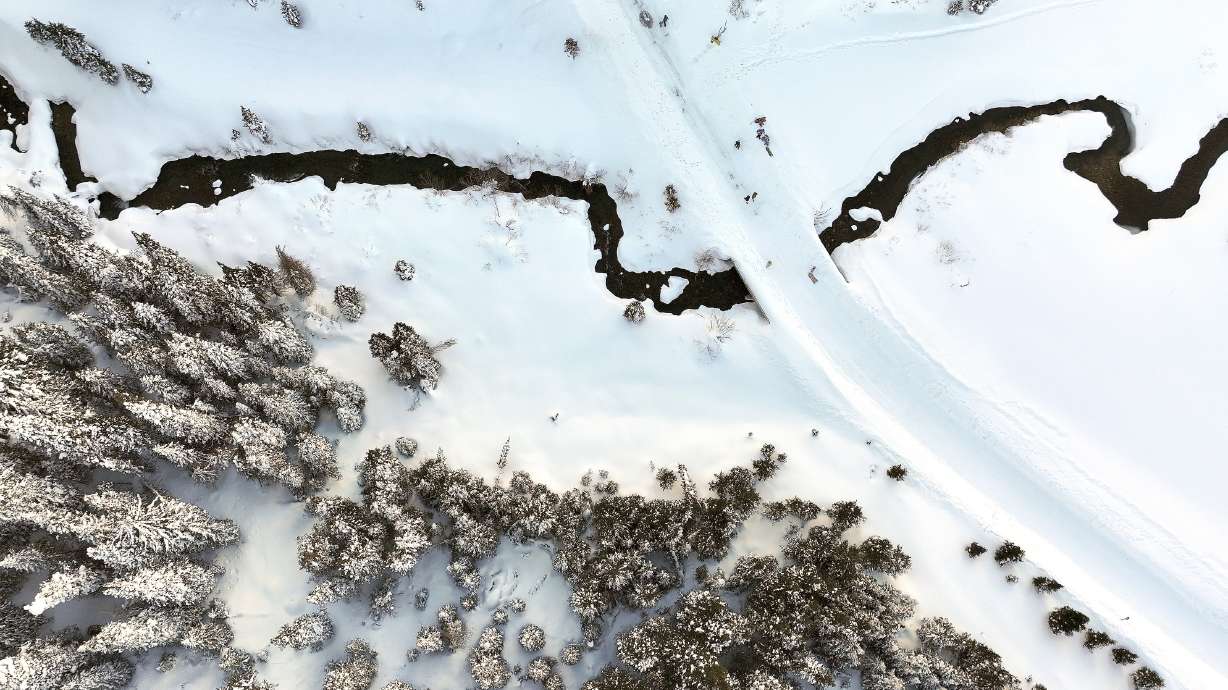Estimated read time: 3-4 minutes
This archived news story is available only for your personal, non-commercial use. Information in the story may be outdated or superseded by additional information. Reading or replaying the story in its archived form does not constitute a republication of the story.
SALT LAKE CITY — Utah's water supply is showing "promising signs of resilience and abundance" following a series of storms since the start of the new year, state water managers say.
Utah's snowpack remains at 111% of the median average for mid-February, and more snow is forecast to fall in northern Utah's mountains Thursday and Friday. Additional storms are in the seven-day forecast, which should keep the statewide average above normal.
Utah's reservoir system is also up to 82% capacity, nearly 34 percentage points above the combined average this time last year and 23 percentages above the median February average, per Utah Division of Natural Resources data. That's before all of the snowpack melts later this year.
Candice Hasenyager, division director, said Thursday the figures are a "significant win" for Utah after a "rocky start" to the water year.
"It positions us well for the coming months and emphasizes the positive impact of recent weather patterns," she said in a statement.
Division officials said January storms played a "vital role" in the sudden turnaround, but this month has also tacked onto that. Utah has gained 7.8 inches of snow water equivalent since Jan. 1, 3.2 inches of which has come since Feb. 1, according to Natural Resources Conservation Service data.

What's more, recent storms propelled all of Utah's regional snowpack levels. All of the state's snowpack basins are between 104% and 123% of their respective mid-February median averages.
"The recent storms have benefited the state as a whole and have significantly contributed to addressing water supplies in southern Utah," Hasenyager said. "This, coupled with high reservoir storage, is good news."
Controlled water releases to prevent flooding are already underway at Utah Lake, a natural lake considered one of the reservoirs in the state system. That's because the lake began nearing full capacity for the first time since 2011.
Similar releases are expected at other reservoirs in the state in the coming weeks and months, as managers of the reservoirs calculate how much water they expect a reservoir will bring in from the snowpack and compare it to available capacity. Brian Steed, Utah's Great Salt Lake commissioner, said he's spoken with various water districts within the lake's basin to secure releases that will flow into the lake.

The Great Salt Lake has also benefited over the past few months. Its southern arm was up to 4,193.5 feet elevation, as of noon Thursday, up about 1½ feet since the start of the water year, Oct. 1, according to the U.S. Geological Survey. Its northern arm is up to 4,190.2 feet elevation.
Both arms are about 4.5 to nearly 8 feet below what's considered their minimum healthy levels.
While all of this is good news, it doesn't change the need for Utah's efforts to alter water habits that intensified as an extreme drought hampered the state. While only 4% of Utah remains in moderate drought — down from 10% three months ago and from 96% this time last year — division officials say Utahns should become "more drought-resilient and prepare for future conditions."
They say farmers should consider adopting more water-efficient practices through the state's agricultural water optimization program and residents should also look at options to cut back on water consumption.
"We still need to use our water wisely to help preserve our water supplies," Hasenyager said.









